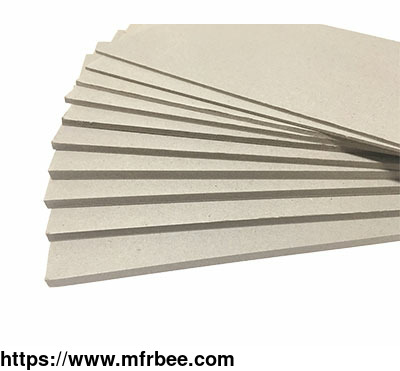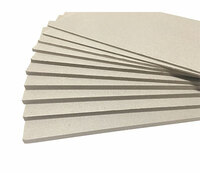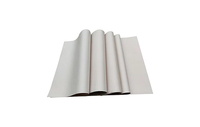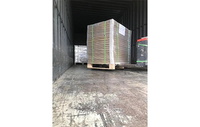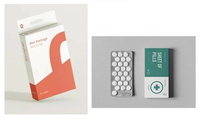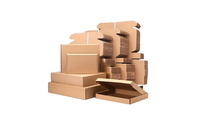Cardboard
Specifications
Bulk blank cardboard, blue cardboard is a hard material made up of wooden material and it is used for manufacturing boxes, and for some other packaging paper types, cardboard material is also heavy
in weight as compared to paper. Unlike cardboard types, paper is used for writing purposes. A paper is thin in width and light in weight. Books are published and printed on book cover paper. Gift
papers are used for packaging a special gift. Cardboards are more durable than paper packing boxes. Cardboard is also used to make cartons for the supply of good materials. Cartons are used for
packaging products like chips, and biscuits, and for packing other editable products.
Reasons Why Cardboard Is The Best Packaging Material
For all industries, you need to be sure that your products are well-protected. Not only do you need to make sure that items have great packaging to prevent damage, but there are also a wealth of
other considerations to think about. Aspects of packaging that you may consider could include its environmentally-friendly credentials, aesthetic qualities, practicality, and ease of
transportation, for these reasons, buying cardboard is the best solution, it is versatile, recyclable, and cost-effective, and also can cut transportation costs.
how Long Does Cardboard Take to Decompose?
Cardboard, a widely used material in packaging, is known for its eco-friendly properties, including its ability to decompose. However, the exact time the bulk cardboard takes for cardboard to
decompose can vary greatly, depending on several factors.
Under ideal conditions, which include a warm and moist environment with plenty of microorganisms, bulk candy cardboard sheets can start to decompose within three months. This is significantly
faster than many other materials, particularly synthetic ones like plastic, which can take hundreds of years to break down.
However, in less ideal conditions, such as in a dry environment or one with fewer microorganisms, the decomposition process can take much longer. In a landfill, where waste is often compacted and
not exposed to air, biodegradable cardboard might take up to two years to decompose.
Different types of cardboard also play different roles in the decomposition time. Corrugated cardboard, which is thicker and often used in boxes, may take longer to break down than thinner,
paperboard types. Additionally, cardboard that has been treated with certain chemicals or coatings, such as wax or plastic, will also take longer to decompose and may not be as environmentally
friendly.
In conclusion, while the decomposition time for cardboard can range from three months to two years depending on various factors, its ability to break down and be recycled makes it a more
sustainable packaging material. As consumers, we can contribute to its sustainability by recycling cardboard products whenever possible.
Cardboard FAQs
Q
What is a cardboard made of?
Cardboard bulk is made from various pulps and interwoven with fibers.
Q
What are the properties of cardboard?
Q
How to properly recycle cardboard?
Q
Advantages of cardboard packaging for food
Q
Difference between cardboard and chipboard
Q
What is the strongest type of cardboard?
Advantages of Cardboard
Strength and durability: The cardboard type is known for its strength and durability, making it suitable for various cardboard applications. It can withstand a certain amount of weight and
pressure, making it ideal for packaging and transporting goods.
Lightweight: Despite its strength, cardboard material is relatively lightweight compared to many other materials. This makes it easier to handle, transport, and store.
Cost-effective: Cardboard paper sheet is generally an affordable material, making them a cost-effective choice for packaging, shipping, and other applications. It is widely available and can be
easily produced in large quantities, reducing the production of paperboard prices.
Recyclable and sustainable: Cardboard is made from paper fibers derived from trees, which are a renewable resource. It is highly recyclable, and the recycling process helps to reduce waste and
conserve resources. Using recycled cardboard also helps reduce the demand for new raw materials.
Versatility: Bulk cardboard is highly versatile and can be easily cut, folded, and shaped to create various structures and products. It can be used for paper boxes for packing, displays, signage,
protective inserts, partitions, and more.
Printable and customizable: Cardboard material provides a printable surface that allows for branding, labeling, and custom designs. It can be easily decorated, painted, or printed on, making it
suitable for marketing and promotional purposes.
Insulation properties: Depending on its thickness, cardboard can provide some level of insulation. Giant cardboard can help protect goods from temperature fluctuations during storage and
transportation, making it useful for perishable items or sensitive products.
Shock absorption and cushioning: Cardboard has natural shock-absorbing properties that can help protect fragile items during shipping and handling. It can be used as a cushioning material to
prevent damage and breakage.
Biodegradable: Cardboard is biodegradable and can break down naturally over time, reducing its impact on the environment. Biodegradable cardboard is a preferable alternative to non-biodegradable
materials like plastic or Styrofoam.
Is Cardboard Biodegradable?
Cardboard is made from tree pulp, which is an organic material, and over time, it will break down or decompose back into the earth. However, the rate at which this happens can vary depending on
several factors.
Box cardboard is considered a green waste material, similar to other garden waste or organic matter. When exposed to the elements, microorganisms, sunlight, water, and air, this recycled paperboard
will gradually decompose. This process can take anywhere from a few weeks to a couple of months depending on the conditions.
However, it’s important to note that not all cardboard is created equal. Some types of paperboard, such as those used for food packaging, are often coated with a thin layer of plastic to make them
resistant to moisture. This plastic layer can significantly slow down the decomposition process and may not be biodegradable.
In addition, biodegradable cardboard that is heavily dyed or bleached may also take longer to decompose due to the chemicals used in the process. These chemicals can also potentially leach into the
soil and cause environmental harm.
Despite these potential issues, the bulk cardboard sheets are still generally considered the environmentally friendly materials. They are often reused and recycled, which reduce the need for new
material to be produced. In fact, recycled paperboard saves 24% of the total energy needed for virgin cardboard.
Furthermore, when biodegradable cardboard does end up in the landfill, it decomposes much more quickly and with less environmental impact than many other types of waste, particularly those made
from plastic or other non-biodegradable materials.
In conclusion, while the rate of decomposition can vary, different types of cardboard are indeed biodegradable. By choosing cardboard over non-biodegradable alternatives, we can help reduce waste
and have a positive impact on the environment.
If you want to know more about difference between cardboard and chipboard, difference between cardboard and corrugated and difference between cardboard and paper , please visit our website.
Xiaolong Paper & Cardboard is a Chinese paper and cardboard manufacturer that specializes in producing and supplying high-quality paper products for a wide range of industries.
- Country: Afghanistan
- Contact: xiaolong packaging
